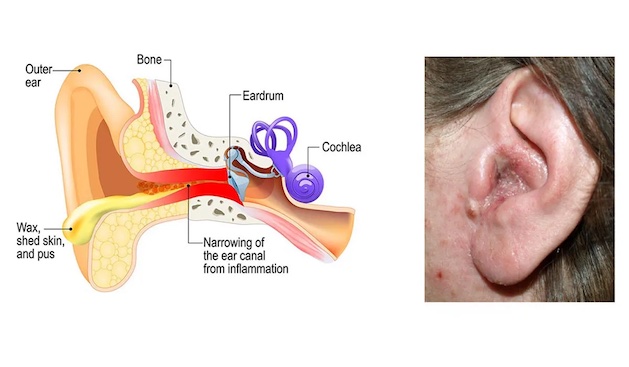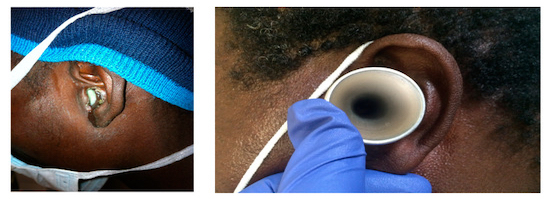


Date: 08 Jul 2025
Otitis externa, commonly known as swimmer’s ear, is an infection or inflammation of the external ear canal—the tube that runs from the outer ear to the eardrum. This condition is particularly common in individuals who spend a lot of time in water, especially swimmers, hence the name. However, it can also affect people who excessively clean their ears, wear earbuds or hearing aids frequently, or have certain skin conditions.
Otitis externa can range from mild irritation and itching to severe pain and swelling. Fortunately, with early detection and the right care—including appropriate medication and preventive habits—most cases can be managed successfully. In this article, we explore the causes, symptoms, treatments, and prevention measures for otitis externa, along with recommended over-the-counter products from Pharmily Kenya that may help in managing this condition effectively.

Otitis externa is typically caused by a bacterial or fungal infection in the ear canal. The external ear is naturally protected by a layer of earwax (cerumen), which keeps the environment slightly acidic and prevents infections. However, when this protective barrier is disrupted, it creates a favorable environment for microbial growth.
People with weakened immune systems or chronic illnesses such as diabetes are more susceptible to developing severe or recurrent otitis externa.
Symptoms of otitis externa can vary depending on the severity of the infection. They typically develop within a few days of exposure or skin damage.
In severe cases, individuals may experience fever, swollen lymph nodes, or spreading redness beyond the ear canal.

Treatment typically depends on the cause and severity of the infection. Most cases resolve within 7 to 10 days with appropriate treatment.
During treatment, it’s important to keep the ear dry and avoid inserting anything into it, including cotton swabs or earbuds.
Prevention is key, especially for those prone to recurring ear infections. Simple steps can go a long way in keeping your ears healthy:
Here are some helpful over-the-counter options available at Pharmily Kenya to support treatment and prevention:
These drops are designed to dry out moisture trapped in the ears after swimming or bathing. They help maintain an acidic environment in the ear canal, discouraging bacterial growth. Ideal for frequent swimmers and children.
Otipax combines an analgesic (pain reliever) with a mild antiseptic, making it suitable for early-stage infections and symptom relief. It’s safe and commonly used to reduce pain and inflammation in the ear canal.
Cerumol is excellent for softening earwax and clearing ear canal blockages. This allows for better penetration of medical ear drops and can prevent wax buildup, a common trigger for infection.
This natural, soothing product is great for softening wax and calming irritated ear canals. It’s gentle enough for daily maintenance and ideal for individuals with sensitive ears or recurring dryness.
Most mild cases of otitis externa heal within 7 to 10 days with proper treatment. Symptoms like pain and itching often improve within 48 hours of starting medication.
It’s best to avoid swimming or getting your ears wet while undergoing treatment. Water exposure can delay healing and worsen the infection.
No. Cotton buds can irritate the skin, push wax deeper, and damage the ear canal lining—raising the risk of infections like otitis externa. Let the ear clean itself naturally or use ear drops for wax removal.
See a doctor if symptoms persist after 3 days of treatment, worsen over time, or if you experience fever, discharge, or severe swelling. People with diabetes or weakened immune systems should seek medical care immediately at the first sign of ear pain or discharge.